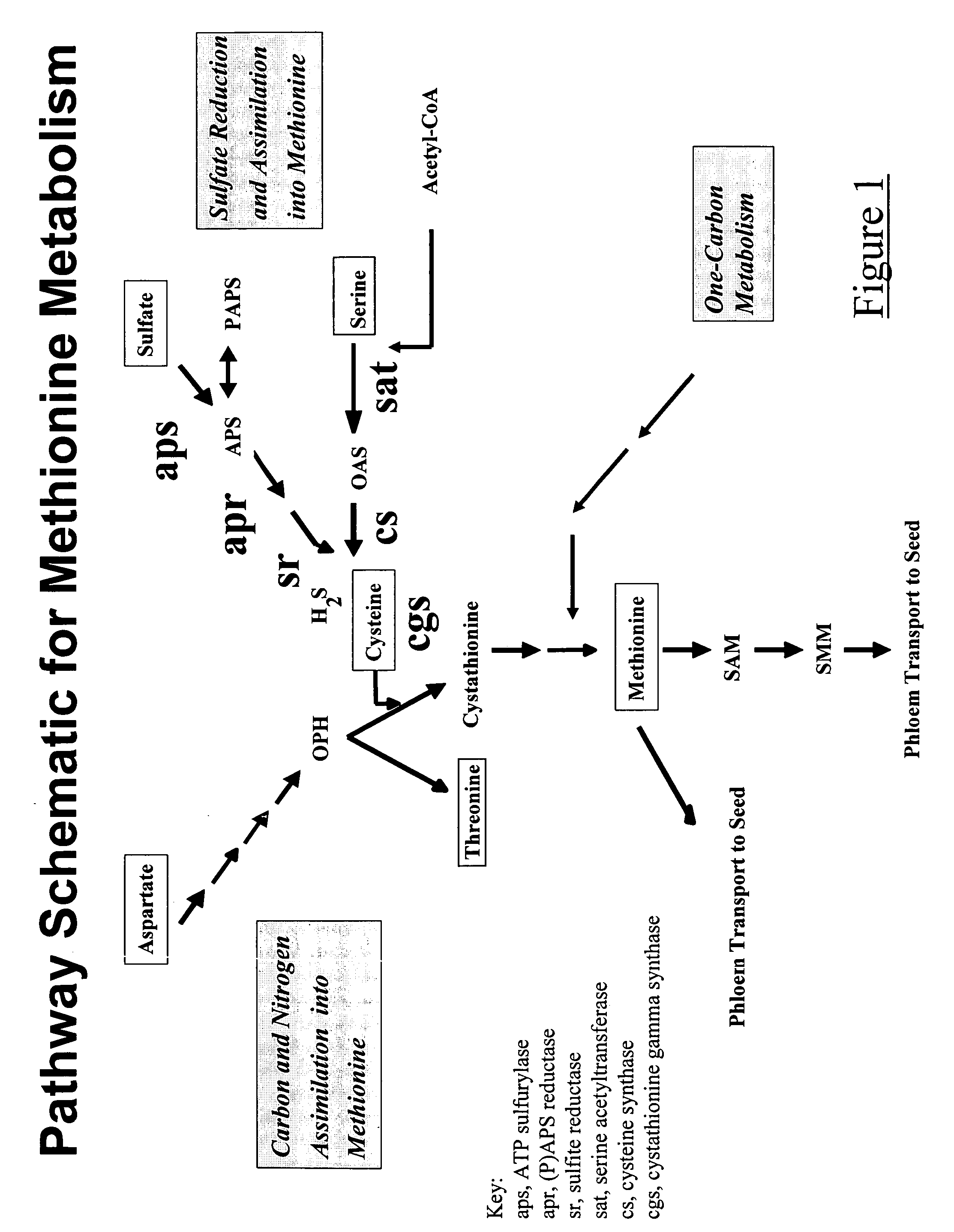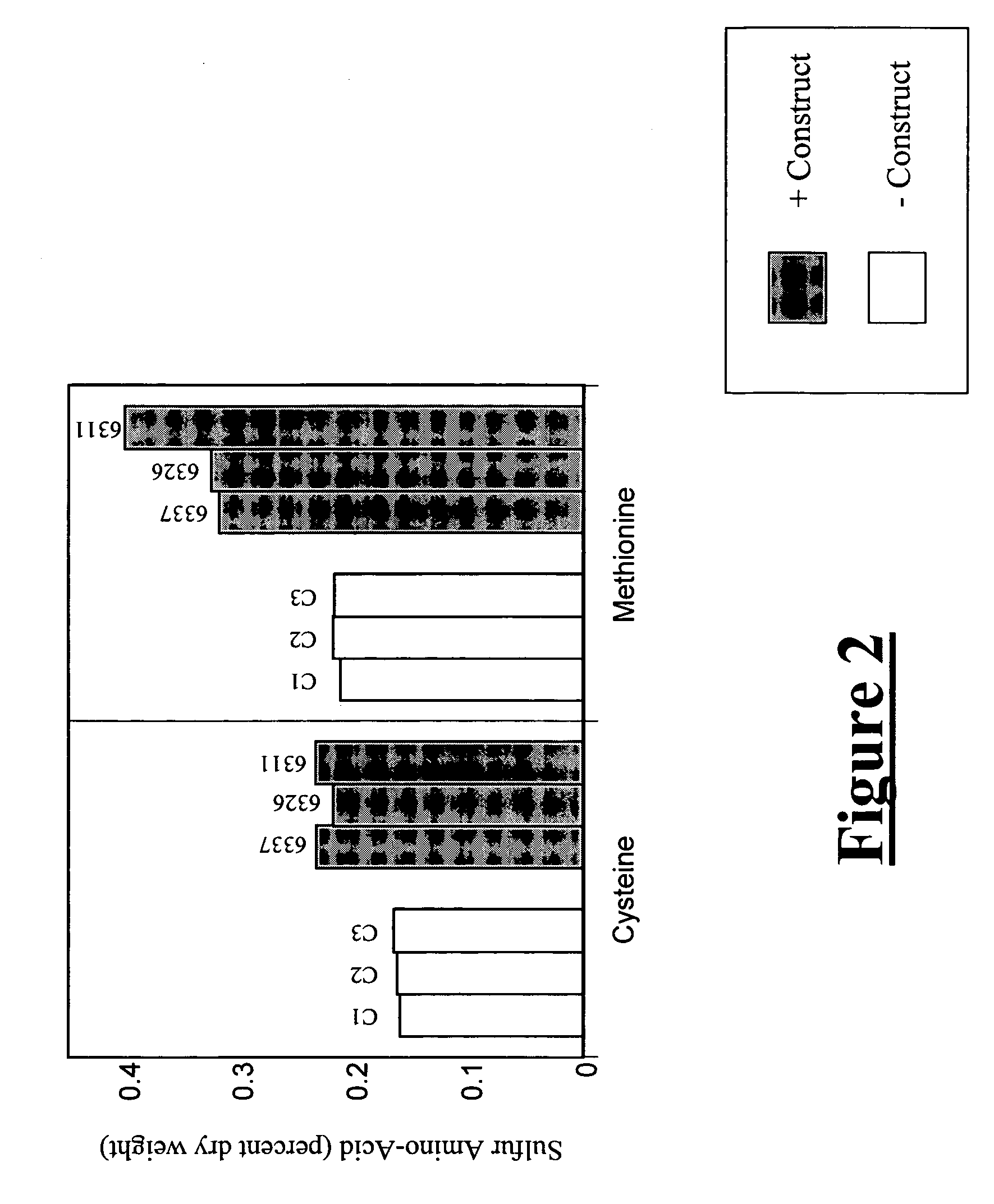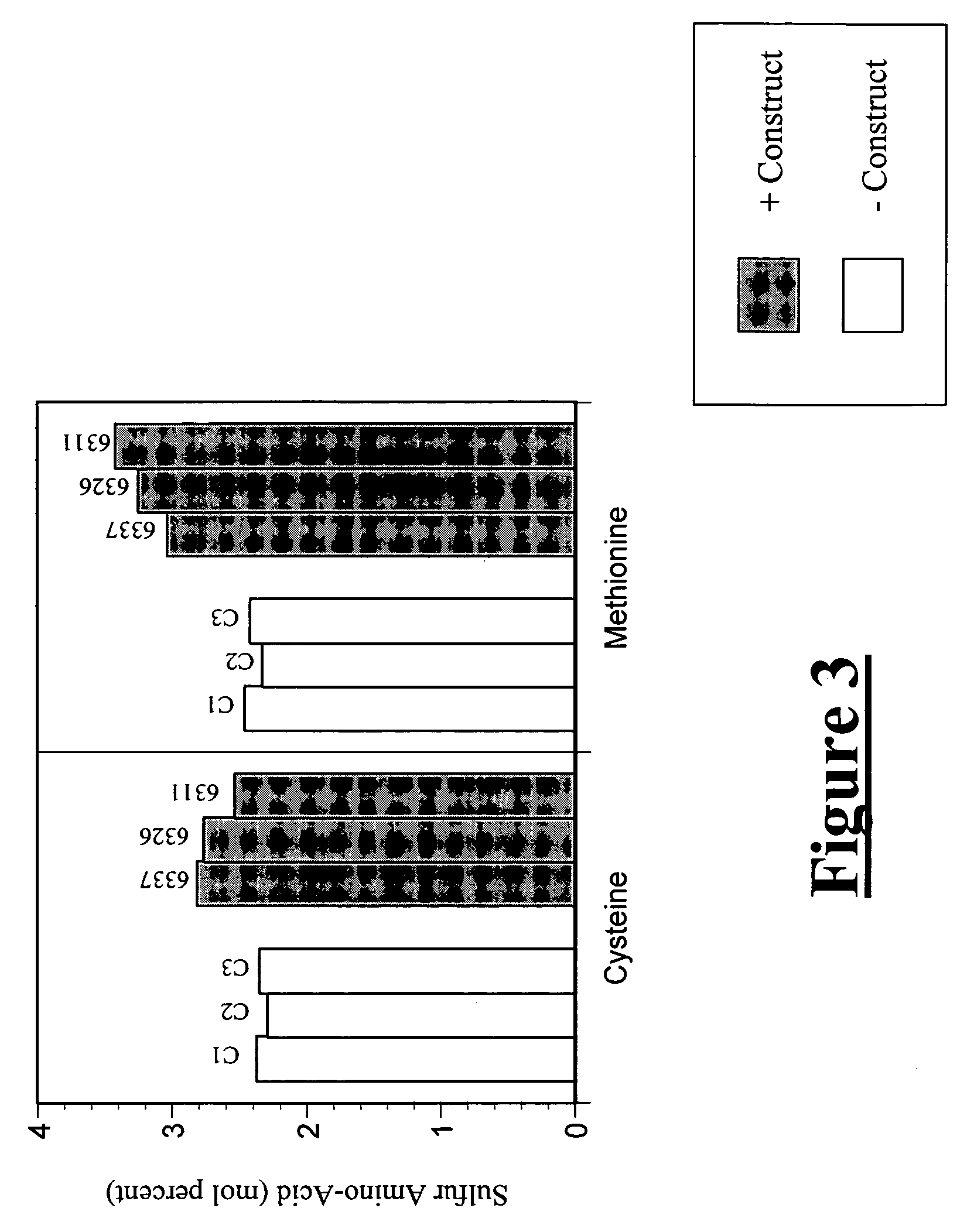Enzymatic methods for modulating the levels of organic sulfur compounds in plants
a technology of organic sulfur compounds and enzymatic methods, which is applied in the field of genetic manipulation of plants, can solve the problems of limited success of methods, and achieve the effect of increasing the nutritional value of plants
- Summary
- Abstract
- Description
- Claims
- Application Information
AI Technical Summary
Benefits of technology
Problems solved by technology
Method used
Image
Examples
example 1
Transformation and Regeneration of Transgenic Maize Plants with Cystathionine Gamma Synthase
[0050]Immature maize embryos from greenhouse donor plants are bombarded with a plasmid containing cystathionine gamma synthase nucleotide sequence (Accession No. AF007786) operably linked to a ubiquitin promoter (U.S. Pat. Nos. 5,510,474 and 5,614,399) that has been optimized for maize codon preference and a pin II terminator (An et. al. 1989), plus the selectable marker gene PAT (Wohlleben et al. (1988) Gene 70:25–37) that confers resistance to the herbicide Bialaphos.
Transformation of Maize
[0051]Freshly isolated immature embryos of maize, about 10 days after pollination (DAP), are cultured for 4–5 days before transforming DNA is delivered via particle bombardment. The preferred genotype for transformation is the highly transformable genotype Hi-II (Armstrong, C. L., 1991, Development and Availability of Germplasm with High Type II Culture Formation Response, Maize Genetics Cooperation Newsl...
example 2
Agrobacterium-mediated Transformation of Maize with Cystathionine Gamma Synthase
[0070]For Agrobacterium-mediated transformation of maize with a cystathionine gamma synthase nucleotide sequence, a maize cDNA for cystathionine gamma synthase (Accession No. AF007786) is fused to a maize optimized ubiquitin promoter (U.S. Pat. Nos. 5,510,474 and 5,614,399) that has been optimized for maize codon preference and a pin II terminator sequence (An, et al., 1989). The cystathionine gamma synthase cassette, also containing a CaMV35S—bialaphos selectable marker element, is cloned into a binary vector and introduced into Agrobacterium.
Transformation of Maize Mediated by Agrobacterium
[0071]Freshly isolated immature embryos of maize, about 10 days after pollination (DAP), are incubated with the Agrobacterium. The preferred genotype for transformation is the highly transformable genotype Hi-II (Armstrong, C. L., 1991, Development and Availability of Germplasm with High Type II Culture Formation R...
example 3
Transformation and Regeneration of Transgenic Maize Callus with Serine Acetyl Transferase
[0091]Immature maize embryos from greenhouse donor plants are bombarded with a plasmid containing serine acetyl transferase nucleotide sequence (Seq. ID No. 1) operably linked to a ubiquitin promoter (U.S. Pat. Nos. 5,510,474 and 5,614,399) that has been optimized for maize codon preference and a pin II terminator (An et. al. 1989), plus a plasmid containing the selectable marker gene PAT (Wohlleben et al. (1988) Gene 70:25–37) that confers resistance to the herbicide Bialaphos. Transformation is performed according to the procedure described in Example 1.
PUM
| Property | Measurement | Unit |
|---|---|---|
| angle | aaaaa | aaaaa |
| pH | aaaaa | aaaaa |
| size | aaaaa | aaaaa |
Abstract
Description
Claims
Application Information
 Login to View More
Login to View More - R&D
- Intellectual Property
- Life Sciences
- Materials
- Tech Scout
- Unparalleled Data Quality
- Higher Quality Content
- 60% Fewer Hallucinations
Browse by: Latest US Patents, China's latest patents, Technical Efficacy Thesaurus, Application Domain, Technology Topic, Popular Technical Reports.
© 2025 PatSnap. All rights reserved.Legal|Privacy policy|Modern Slavery Act Transparency Statement|Sitemap|About US| Contact US: help@patsnap.com



